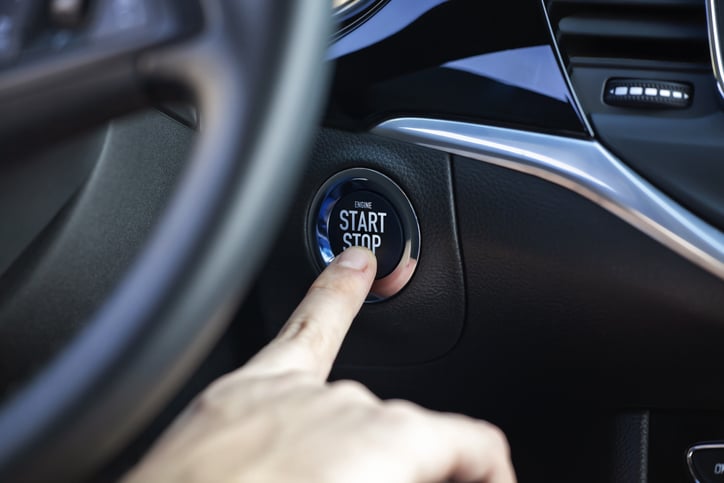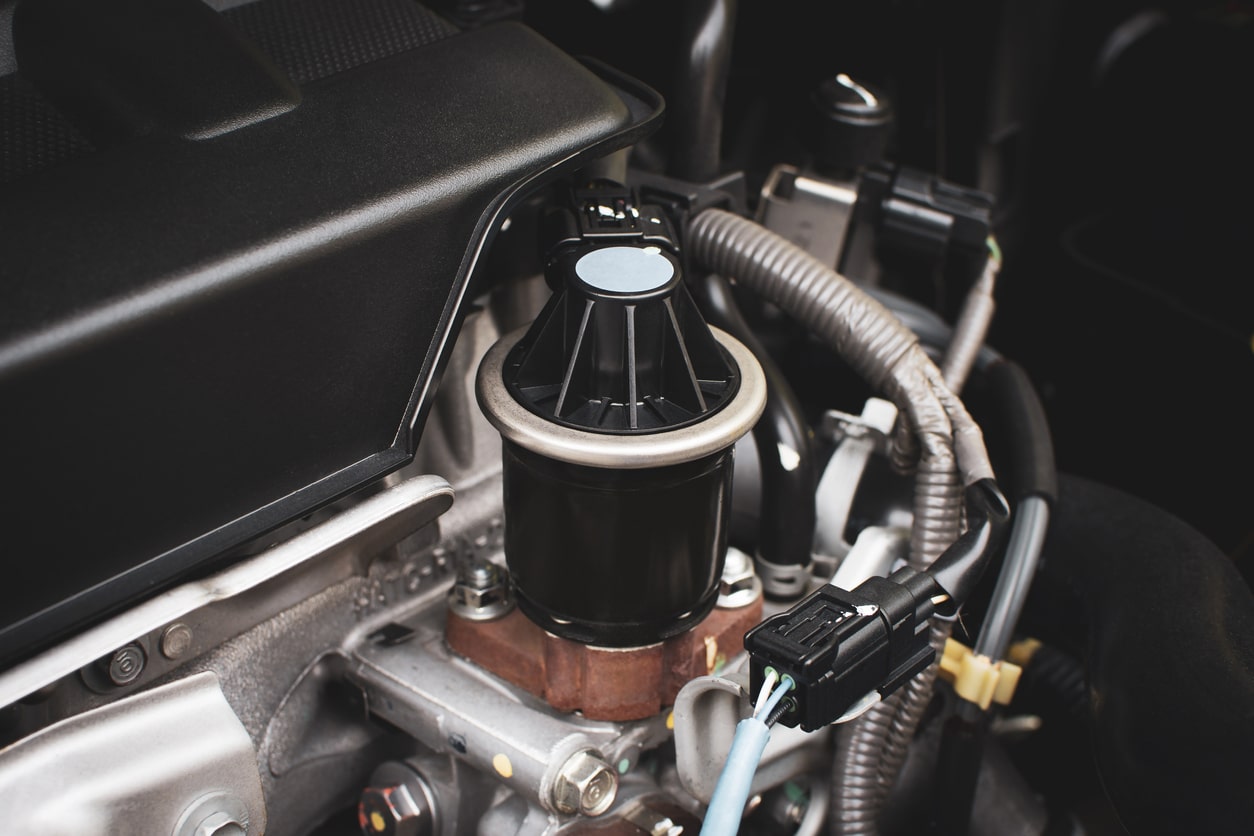As newer cars enter the market, start-stop technology is becoming a popular standard feature in petrol, diesel, and hybrid fuel types.
So, how does it work, how can you tell that your car has this feature, and why are manufacturers opting to include it in their cars?
Let’s take a look.
Quick Links
- What is Start-Stop Technology?
- Does my Car Have a Start-Stop Engine?
- How Do I Drive a Start-Stop Car?
- Car Start-Stop Batteries
- Start-Stop Technology Benefits
- Start-Stop Disadvantages
What is Start-Stop Technology?
Start-stop technology is a feature that means the car engine cuts out whenever it’s stationary to reduce fuel consumption and emissions.
In hybrid fuel-type cars, the same system might also shut down the combustion engine when the car cruises at low throttle loads, when descending a hill, and when decelerating from higher speeds.
The engine will start back up again when the clutch is pressed or the brakes are released, but it can also start up when the driver is ready to move or accelerate again.
When driving in congested urban areas, drivers often find themselves at a standstill in a traffic jam or at a busy junction. Start-stop technology ensures that drivers aren’t burning fuel or releasing emissions unnecessarily in these instances – saving fuel and reducing pollution in the process.
Does My Car Have a Start-Stop Engine?
Cars with start-stop technology will have a button that switches the engine of the car on and off rather than the traditional turning a key in the ignition. Whether you have a fob-style key or keyless entry, it will usually be obvious from the get-go that the engine is different from what you might be used to.
Most start-stop engines will also have a button allowing the driver to switch off the automatic feature. Check out your car’s manual to find out how to do this.
When setting up your car, you should take the time to understand how the feature works in your vehicle and use any other available driver’s aids you might have. Read our top tips for setting up your new car for more in-depth information.
How Do I Drive a Start-Stop Car?
The only difference with driving a start-stop car is that when you come to a stop, the engine will cut out. The battery will continue to power the electronics and other functions within the car but the engine won’t idle.
Other than that, you’ll be able to drive the car as you would any other.
Car Start-Stop Batteries
Cars with a start-stop system require a high-capacity start-stop battery. Since the engine will be turning on and off more than usual, the battery must have enough power to turn on quickly at any time to get the car moving again.
The larger current supply in these batteries allows for an improved cyclic performance, which can discharge and recharge more often. Meanwhile, a regular car battery is simply equipped with the capacity to supply a large current to turn the starter motor.
Start-Stop Technology Benefits
As mentioned earlier, start-stop technology was designed to reduce emissions and cut down on fuel consumption. So, let’s take a closer look at the advantages of this feature…
Reduces pollution
Idling cars emit harmful carbon emissions into the atmosphere, and the cost of these is greater since you’re not actually moving. Even if it’s only for a few seconds or minutes per journey, the presence of start-stop technology can make a huge difference to the volume of emissions you produce on those daily drives.
Carbon emissions remain a huge talking point, with clean air zones becoming increasingly popular around the country. The more vehicles that are fitted with stop-start technology, the fewer the emissions in urban areas where idling cars are commonplace.
Therefore, car manufacturers are opting to include start-stop technology to reduce carbon emissions, help reach global pollution goals, and to get ahead of the competition on environmental standards and efficiency.
Saves on fuel
An idling car is still burning fuel at standstill, so it’s essentially money down the drain. Although the amount of fuel you save may only be small, every little helps, particularly if you do most of your driving around town and regularly find yourself stuck in traffic.
Quieter journeys
Although an idling engine isn’t the loudest, you’ll certainly notice a positive difference when driving a car with start-stop technology. This is particularly true for hybrids where the engine may remain switched off until you reach faster speeds.
Start-Stop Disadvantages
While start-stop technology is generally viewed as a desirable feature on a car’s spec sheet, it does have a few disadvantages you need to be aware of…
Replacement component cost
Start-stop technology relies on complex electronics and a powerful battery, and while these systems are built to last, replacing the parts can be expensive.
Increased wear on the engine
Over the lifetime of a car with start-stop tech, the system will automatically stop the engine tens of thousands of times more than a traditional vehicle. Therefore, the engine is required to work harder, which could increase wear and tear over time.
Lack of trust in the technology
Not everyone will feel comfortable with the engine automatically cutting out every time they come to a standstill. You must be able to trust that the engine will start back up after it automatically turns off.
It can take time to fully understand how it works and to trust the technology to work as it should.
We hope this guide to start-stop technology helps you see the benefit of this modern car feature. Whatever vehicle you drive, our range of DIY car maintenance tools and products make it easy to fix simple problems yourself. To find out more, visit the Holts homepage today.


